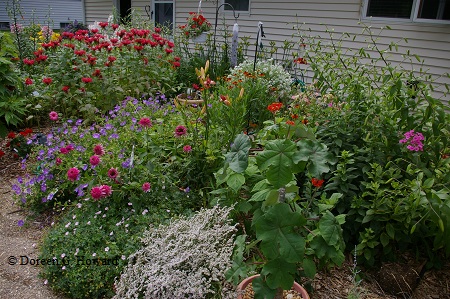
Caption
Is this Mortgage Lifter heirloom tomato a genetically modified organism (GMO)? Yes, it is.
Photo Credit
Doreen G. Howard
More Like This
I am needing to know when it will be ok to place my tomato plants in the garden. I have just purchased them and I'm afraid it's too late to safely get them into the garden. A friend told me that farmers almanac said not to plant anything this weekend in my area. Lexington NC
Plant the tomatoes ASAP; position them in the garden where they get full sun in the morning and some shade in the afternoon. You should be fine.
I am not sure if the person who wrote this article is trying to be intentionally misleading or just isn't up on what is going on. Hiding behind GMO is a good idea if you're trying to fool people because Monsanto and others like them use GMO when they should legally have to use GEO - genetically 'engineered' organism. I question the authors motives in this article.
Hiding behind the GMO acronym is EXACTLY what some bio-engineering companies are doing; trying to mislead the consumer to the benefit of their own bottom line. The more we use the correct terminology and understand the science, the more informed decisions we can make. Start a conversation, get out the information. Try and correct those use misuse the terms. Most people mean genetic engineering when they use the terms genetic modification.
Unless you did this, then you did not make a GMO plant in your garden.
Excellent animation by PBS to illustrate how a GMO crop is made: http://www.pbs.org/wgbh/harvest/engineer/transgen.html
Please note that the wonderful link you shared uses the correct terminology - genetically ENGINEERED and transgenic, not GMO.
Genetic modification is a natural process. It's the engineering of a natural process that we must be aware of. Semantics matter. Please do not continue to enable those who would rather confuse the public. Clarity is our only protection.
This is totally incorrect. Per Wikipedia GMO definition is: A genetically modified organism (GMO) is an organism whose genetic material has been altered using genetic engineering techniques.
It sure looks like Mr Hart is trying to invent a loophole that is not there in order to sell GMO without specifying.
Here is more.
The legal definition is: specifically, "any living organism that possesses a novel combination of genetic material obtained through the use of modern biotechnology"
the last part "obtained through the use of modern biotechnology" that does not include open pollination.
As it states in their website, Wikipedia is written by individuals; anyone can create an article or edit an existing one. These volunteer contributors do not need to have any formal training. All articles are open for revision and correction and are tagged when under review. Since the article on GMO was first written 13 years ago, it has been reviewed and corrected many hundreds of times and is now once again under review. Wikipedia has slowly been changing the references from ‘modified’ to ‘engineered’ or ‘product of modern biotechnology’ in relation to transgenic organisms. Please read their entire discussion, references, cross references, links and history to have a better understanding.
Even more reading:
The Cartagena Protocol on Biosafety, which is an international agreement on biosafety lays everything out as clear as crystal.
- « Previous
- 1
- 2
- …
- 10
- Next »











Comments